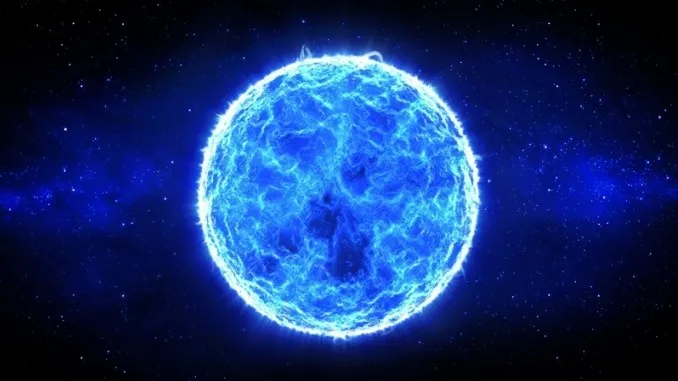
Rigel is the sixth brightest star on the planet that you can see in your skies and can easily be seen even in cities with the most intense light pollution with a brightness of 0.18.
Rigel is a giant star of the mother earth, having 21 times the mass of the Sun and living the healthy periods of its life. The diameter is about 80 times larger than the Sun and the surface temperature is about 12000 degrees Celsius. The star radiates about 120,000 times more energy from the Sun thanks to its diameter and surface temperature. As most giant stars are a bit crazy, the brightness may vary. The reason is that the enormous amount of starstock produced forces the outer shell to swell, which in turn changes the amount of energy produced in the core. For more detailed information, you can read "cepheid variables".
Astronomers think that Rigel is a triple-star system, and they give the name Rigel, the main star we've been talking about since the beginning of the article. Comrades Stars Rigel B and Rigel C, the other members of the triple system, are far from the main star (at least 2,000 astronomical units, at least 300 billion km). Although we do not have much information about these two co-stars, we estimate that Rigel B is a star of the B spectrum with about 2.5 solar masses and 50 times the Sun's luminosity. The star of Rigel C, which we are not sure of the mass at the moment, forms a dual system with Rigel B, and the main star wraps around Rigel A's.
Like all the O-B type giants, we can say that Rigel is also quite short-lived. These blue giant stars who lived fast and dying young, as well as the great energy they have produced throughout their lives, are also much more crushing and distributing themselves. So much so that according to the calculations done by astronomers, Rigel, which we now estimate to be 8 million years old, was actually a star with 24 solar masses, not 21 in the past. Within 8 million years of life, he swallows a quantity of the Sun's mass in the space of space with star winds and powerful explosions.
The fact that a star in Rigel mass still survives 10 million years in the hydrogen-rich healthy motherland is linked to miracles. For this reason, the 8-million-year-old Rigel is expected to slowly turn into a red giant star in the next few million years. In the next 1-2 million years, the red camel will consume all its fuel and farewell to us with a supernova explosion. It is not possible to know what will happen to Rigel's mass when the supernova burst. For that reason, we do not know if it will remain a black hole or a neutron star.
It is a possibility that life around a gigantic star occurs, or a life that has been formed elsewhere can not be housed around such a star. Firstly, there is not enough time for planet formation around such stars, and planet formation is not possible. Besides, the enormous radiant power of the star creates the most hostile environment for possible living spaces.

You could ask yourself: What would have happened if Rigel was in the place of the Sun and we had taken Earth and burned it where Pluto was? The answer is simple, the energy from Rigel would be so great, even though we were not that far away, that every day we would turn into a planet where the rocks melted at birth, and the surface of the Earth came together. Also, due to the enormous star winds, our ionic atmosphere quickly escaped into space, and our highly magnetic field could not do anything to protect us.
Therefore, it is not thought that there can be any way of life around Rigel. The best part of this star for us is that when it turns into a red giant star 2-3 million years later, it will be several times brighter in the sky. Of course, we should not forget the supernova feast we will follow.